Analysis of Flue gas Desulfurization Wasterwaters by ICP-MS
Wastewater from coal-fired power plants is linked to a wide range of environmental and human health concerns. Measuring low levels of toxic trace metals in these wastewaters is complicated, however, by high levels of interfering matrix elements. A new EPA method using ICP-MS addresses this analytical challenge.

Flue gas desulfurization (FGD) wastewaters present a considerable analytical challenge for inductively coupled plasma–mass spectrometry (ICP-MS) because of high and variable concentrations of potentially interfering elements. For this reason, the United States (US) Environmental Protection Agency (EPA) commissioned the development of a new procedure, based on methods 200.8 and 1638 with requirements and quality control specific to the matrix. This paper discusses the development and performance of that procedure.
Sulfur emissions from coal combustion have been a focus of concern for some time because of their contribution to the formation of acid rain, accelerated soil acidification, and forest degradation. Air quality regulations established in the United States require SO2 scrubbing for most coal fired plants, with the resulting formation of flue gas desulfurization (FGD) wastewaters. Steam electric power plants are responsible for a significant amount of the toxic pollutants discharged to surface waters by point sources and FGD systems are the source of many of these pollutants. Based on the findings from the Environmental Protection Agency's (EPA) multiyear study of the steam electric power generating industry, a plan to revise the current effluent guidelines is in the works. The revised guidelines will apply to plants "primarily engaged in the generation of electricity for distribution and sale which results primarily from a process utilizing fossil-type fuel (coal, oil, or gas) or nuclear fuel in conjunction with a thermal cycle employing the steam water system as the thermodynamic medium." This includes most large-scale power plants in the United States. This decision is largely driven by the high level of toxic-weighted pollutant discharges from coal-fired power plants and the expectation that these discharges will increase significantly in the next few years as new air pollution controls are installed. The discharge of coal combustion wastewater from coal-fired power plants has caused a wide range of environmental effects to local aquatic life. Coal combustion wastewater also has been linked to human health concerns because of elevated pollutant concentrations in surface and ground water (1). Effluents from these plants, especially coal-fired plants, can contain several hundred to several thousand parts per million of the "matrix" elements: calcium, magnesium, manganese, sodium, boron, chloride, nitrate, and sulfate.
ICP-MS Is the Preferred Method
Environmental matrices, which may contain low concentrations of toxic contaminants and high concentrations of interfering matrix elements, have historically presented challenges for sample analysis. Inductively coupled plasma–mass spectrometry (ICP-MS) was developed in the 1980s and has been used increasingly in the environmental field because of its multielemental isotopic capability, high sensitivity, and wide linear dynamic range. Provided that some care is taken during sample preparation and that appropriate calibration strategies are used to circumvent nonspectroscopic interferences, the technique is readily applicable to the analysis of a wide variety of environmental samples (natural waters, soils, rocks, sediments, vegetation, and so forth) (2). Two EPA ICP-MS methods are commonly used for regulatory compliance in environmental testing: Method 200.8 for water and wastewater and Method 6020A for solid waste. Both have recently been updated or are in the process of being updated.
However, analysis of FGD wastewater matrix for low parts-per-billion levels of toxic trace metals (for example, As, Cd, Cr, Cu, Pb, Se, Tl, V, and Zn) by ICP-MS presents a significant challenge because of high levels of dissolved solids and potential interferences from molecular species. FGD wastewater can vary significantly from plant to plant depending on the type and capacity of the boiler and scrubber, the type of FGD process used, and the composition of the coal, limestone, and makeup water. As a result, FGD wastewaters represent one of the most challenging sets of samples for ICP-MS. That is, they are both very high in matrix elements (for example, calcium, magnesium, and chloride), known to cause interferences, and are highly variable.
Three Approaches to Reducing Matrix Interferences
A new technique for the handling of high-matrix samples has been developed that inserts makeup gas between the spray chamber, where the sample is nebulized, and the torch, where plasma is generated. The end effect is an "aerosol dilution" that does not require the introduction of more water to the system and protects the mass spectrometer components from the high levels of matrix elements in the sample. This technique enables the ICP-MS system to handle 1% total dissolved solids (TDS) or higher and reduces oxides and oxide interferences to unprecedented levels. With less water to decompose, the plasma is hotter and, therefore, more robust. This increased robustness is a key to improving the ability of the ICP-MS system to run very high and variable matrix samples routinely and accurately.
Using inert helium in the collision cell instead of reactive cell gases is accepted as the preferred mode for effective and reliable removal of multiple polyatomic interferences in variable or unknown samples (3). It is difficult to simultaneously remove all the interferences that occur in real-world applications using reactive gases. Using helium in the collision cell and a process called kinetic energy discrimination (KED) selectively attenuates all polyatomic interferences based on their size. KED exploits the fact that all polyatomic ions are larger than analyte ions of the same mass, so they collide with the cell gas more often as they pass through the cell, emerging with lower residual energy. These low-energy ions are excluded from the ion beam by a bias voltage at the cell exit, thus reducing interference from polyatomic ions.
Discrete sampling allows the analysis of samples containing high levels of dissolved solids by analyzing a discrete sample volume rather than a continuous sample stream. A very small volume of sample is pulled into a sample loop and then rapidly injected into the nebulizer, followed by a rinse of the sample loop. This approach speeds the analysis and reduces the interferences and deposition of matrix material on the interface cones that can reduce system performance when testing for very low levels of trace metals.
A New EPA Method Was Needed
To address the difficult analytical challenge of measuring low levels of toxic trace metals in FGD wastewater containing very high levels of dissolved solids, the EPA commissioned the development of a simple, robust analytical method for the analysis of regulated metals in highly contaminated FGD wastewaters. This method was developed and validated at Test America Inc. using an Agilent (Santa Clara, California) 7700x ICP-MS system in helium or hydrogen collision mode and equipped with a high matrix introduction (HMI) aerosol dilution system and an integrated sample introduction system with discrete sampling (ISIS-DS) system to handle the high matrix levels in FGD wastewaters. Hydrogen mode was used only for Se analysis to attain sub-part-per-billion detection limits when necessary. The standard operating procedure (SOP) is available on the EPA's website at: http://water.epa.gov/scitech/wastetech/guide/upload/steam_draft_sop.pdf.
Experimental
Quality control for FGD wastewater analysis is typical of other EPA methods. Initial method validation includes the determination of method detection limits, linear ranges, and analysis of multiple, single-element interference check solutions to document the performance of the collision cell at removing specific polyatomic interferences under the conditions used. Daily quality control in a typical analytical sequence follows the workflow shown in Table I.
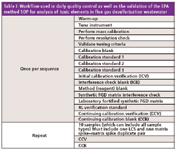
Table I: Workflow used in daily quality control as well as the validation of the EPA method SOP for analysis of toxic elements in flue gas desulfurization wastewater
New to this method are the synthetic FGD matrix sample and fortified FGD matrix sample, which are analogous to the interference check standard-A (ICS-A) and ICS-AB solutions required by EPA Method 6020. However, the synthetic FGD samples are much higher in TDS than the ICS-A and AB solutions and contain those matrix elements that are commonly high in actual FGD samples. The composition of the synthetic FGD matrix sample is listed in Table II.

Table II: Composition of the synthetic FGD matrix solution
Initial demonstration of method performance requires that the project data quality objectives can be routinely met, including the determination of method detection limits (MDLs) and linear dynamic range, validation of interference management in synthetic matrix samples, and documentation of sufficient washout after analysis of high matrix samples.
MDLs were determined via the preparation and analysis of seven synthetic FGD matrix samples spiked at three to five times the estimated MDL concentration of each of the target elements. Spiking the MDL replicates into the synthetic FGD matrix solution is a key requirement to ensure that reasonably achievable detection limits are generated. The MDL is calculated as Student's t for the 99th percentile (3.14) times the standard deviation of the MDL replicate results according to 40CFR Part 136, Appendix B. The MDLs determined using this method are shown in Table III.
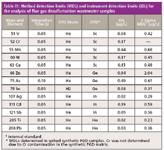
Table III: Method detection limits (MDL) and instrument detection limits (IDL) for the analysis of flue gas desulfurization wastewater samples
Interferences from the high and variable levels of TDS in the matrix present the biggest obstacle to the analysis of FGD wastewater samples. Both spectral (polyatomic ions) and nonspectral (suppression and washout) interferences must be dealt with. To ensure the absence of interferences, high concentration, single-element ICSs were analyzed for the presence of polyatomic interferences and the ability to rinse out in subsequent blanks (Table IV). Elements likely to be present in high concentrations and those known to cause common polyatomic interferences were chosen, including Ca, S, and Cl. These single-element ICSs are used initially to avoid preparation of a synthetic FGD matrix sample containing trace-level contaminants, which can be a problem with high concentration multielement mixes. The use of single-element check solutions simplifies the identification of the source of any contaminants detected.
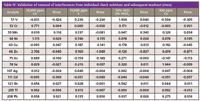
Table IV: Validation of removal of interferences from individual check solutions and subsequent washout (rinse)
Washout (memory effects) were determined via the repeated analysis of blank samples immediately following the analysis of high-concentration single-element ICS (Table IV) and ICS spiked with target elements (Table V).
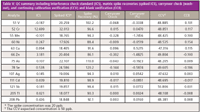
Table V: QC summary including interference check standard (ICS), matrix spike recoveries (spiked ICS), carryover check (washout), and continuing calibration verification (CCV) and blank verification (CCB)
In addition to the initial demonstration of performance, which must be completed at least once per year or after significant instrument maintenance or changes in procedure, regular quality control checks must be performed each day or with each new batch of samples. Daily quality control checks include (Table I):
- Initial calibration verification (ICV) solution (universal in all EPA standard operating procedures), which is from an independent source, contains target element concentrations near the midpoint of the calibration curve, and must recover within ±10% of the true value for all analyte elements.
- Interference check blank (ICB) of the interference check solution used to prepare the ICV, to measure carryover.
- Method blank results must be less than the reporting limit (typically 3–5 × MDL) for each analyte element.
- Synthetic FGD matrix solution analysis must result in target analyte concentrations less than their reporting limits.
- Laboratory-fortified synthetic FGD solution is synthetic FGD matrix solution spiked at 40 ppb for all target elements except Zn (400 ppb) and Al (4000 ppb). All target elements must be recovered within 70–130% of the spiked concentration.
- A reporting limit (RL) verification sample prepared at approximately 2 × the MRL must be recovered within ±50% of the actual value.
- Continuing calibration verification (CCV) and continuing calibration blank (CCB) samples after every 10 actual samples. CCVs, which are done at the midpoint concentration of the calibration curve, must be recovered within 85–115%. CCBs must be less than the reporting limit.
- Laboratory-fortified blank is spiked at 40 ppb for all trace elements, except for aluminum (4000 ppb). It must be recovered within ±3 standard deviations of past results, but must not exceed 85–115%.
- Matrix spike or matrix spike duplicate samples are prepared for each batch by spiking a typical sample out of each group of 10 samples. The relative percent difference must not exceed 20% for any analyte and the recoveries must be in the 70–130% range.
- Internal standard recoveries must be within 60–125% relative to the calibration blank for all samples.

Figure 1: Recovery of calibration check samples (CCVs) over 89 analyses. The horizontal rules indicate the acceptable recovery limits.
Before beginning the analysis of actual samples, an SOP validation sequence composed of 89 analyses was completed using the workflow shown in Table I, including calibrations, initial and continuing QC checks, and real samples. Table V summarizes the daily QC results including the synthetic FGD matrix ICS and spiked ICS, as well as carryover checks, CCV recoveries, and CCB results. CCV recoveries after every 10 real samples are shown in Figure 1. All required quality control checks were within acceptance limits, and more importantly, remained within limits for the duration of the 7-h, 89-sample sequence. Internal standard recoveries, shown in Figure 2, indicate minimal matrix suppression within even the highest TDS samples and less than 10% downward drift from the beginning to the end of the sequence.

Figure 2: Internal standard recoveries over an 89-sample validation sequence. The horizontal rules indicate the acceptable recovery limits.
Richard Burrows is the director of Technical Services at Test America in Arvada, Colorado.

Richard Burrows
Richard Clinkscales is the metals manager at Test America Denver in Arvada, Colorado.

Richard Clinkscales
Steve Wilbur is a senior applications scientist in the ICP-MS group at Agilent Technologies in Santa Clara, California. Direct correspondence to: steven.wilbur@agilent.com.

Steve Wilbur
References
(1) EPA Report 821-R-09-008: Steam Electric Power Generating Point Source Category: Final Detailed Study Report (http://www.epa.gov/waterscience/guide/steam/finalreport.pdf).
(2) D. Beauchemin, Mass Spectrom. Rev. 29(4), 560–592 (2010).
(3) Ed McCurdy, Curr. Trends Mass Spectrom., supplement to Spectrosc. and LCGC North Am., 30–35 (Oct. 2009).
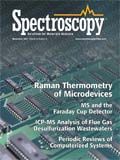
High-Speed Laser MS for Precise, Prep-Free Environmental Particle Tracking
April 21st 2025Scientists at Oak Ridge National Laboratory have demonstrated that a fast, laser-based mass spectrometry method—LA-ICP-TOF-MS—can accurately detect and identify airborne environmental particles, including toxic metal particles like ruthenium, without the need for complex sample preparation. The work offers a breakthrough in rapid, high-resolution analysis of environmental pollutants.
Applications of Micro X-Ray Fluorescence Spectroscopy in Food and Agricultural Products
January 25th 2025In recent years, advances in X-ray optics and detectors have enabled the commercialization of laboratory μXRF spectrometers with spot sizes of ~3 to 30 μm that are suitable for routine imaging of element localization, which was previously only available with scanning electron microscopy (SEM-EDS). This new technique opens a variety of new μXRF applications in the food and agricultural sciences, which have the potential to provide researchers with valuable data that can enhance food safety, improve product consistency, and refine our understanding of the mechanisms of elemental uptake and homeostasis in agricultural crops. This month’s column takes a more detailed look at some of those application areas.
Trending on Spectroscopy: The Top Content of 2024
December 30th 2024In 2024, we launched multiple content series, covered major conferences, presented two awards, and continued our monthly Analytically Speaking episodes. Below, you'll find a selection of the most popular content from Spectroscopy over the past year.